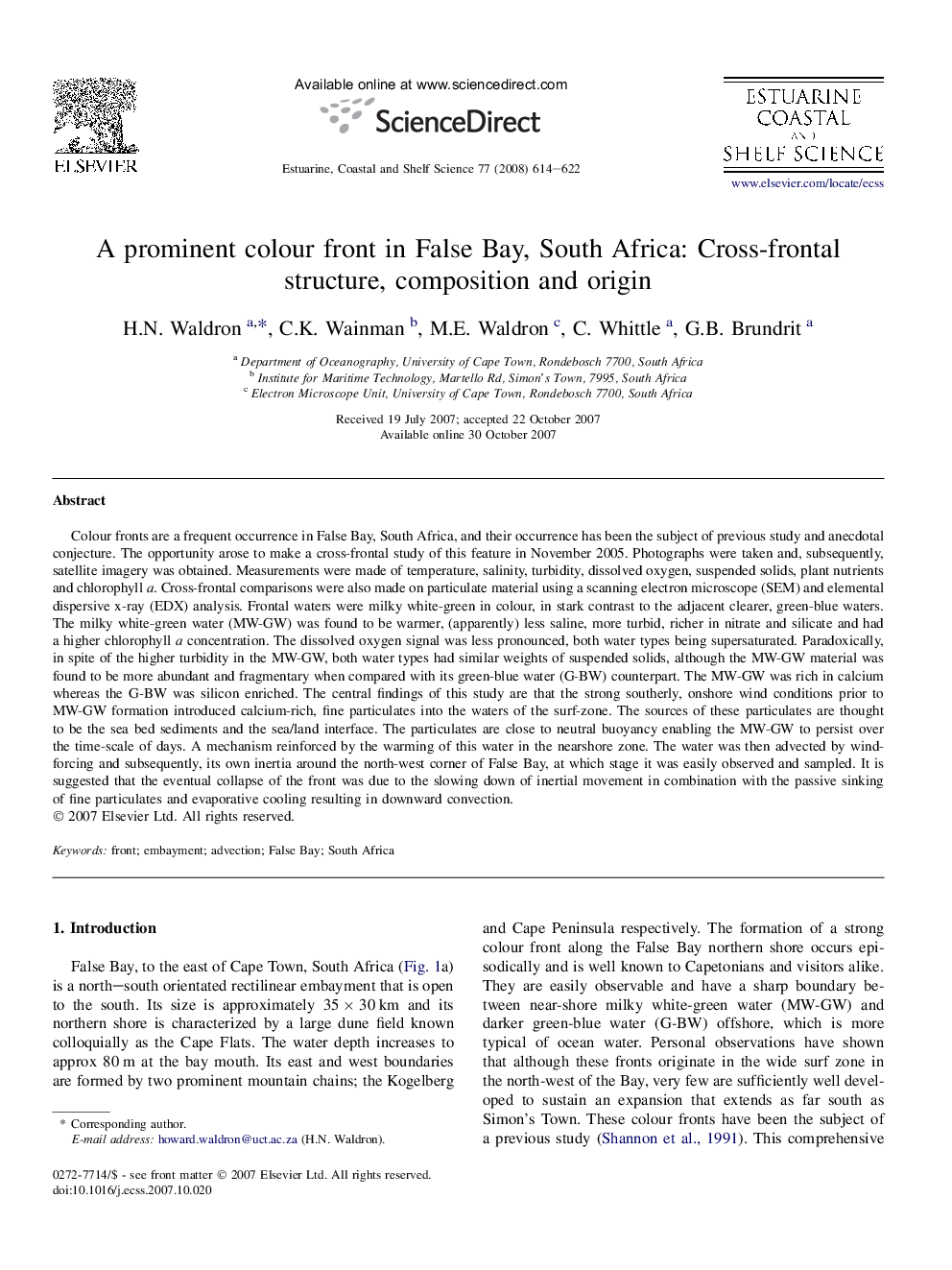| کد مقاله | کد نشریه | سال انتشار | مقاله انگلیسی | نسخه تمام متن |
|---|---|---|---|---|
| 4541520 | 1326728 | 2008 | 9 صفحه PDF | دانلود رایگان |

Colour fronts are a frequent occurrence in False Bay, South Africa, and their occurrence has been the subject of previous study and anecdotal conjecture. The opportunity arose to make a cross-frontal study of this feature in November 2005. Photographs were taken and, subsequently, satellite imagery was obtained. Measurements were made of temperature, salinity, turbidity, dissolved oxygen, suspended solids, plant nutrients and chlorophyll a. Cross-frontal comparisons were also made on particulate material using a scanning electron microscope (SEM) and elemental dispersive x-ray (EDX) analysis. Frontal waters were milky white-green in colour, in stark contrast to the adjacent clearer, green-blue waters. The milky white-green water (MW-GW) was found to be warmer, (apparently) less saline, more turbid, richer in nitrate and silicate and had a higher chlorophyll a concentration. The dissolved oxygen signal was less pronounced, both water types being supersaturated. Paradoxically, in spite of the higher turbidity in the MW-GW, both water types had similar weights of suspended solids, although the MW-GW material was found to be more abundant and fragmentary when compared with its green-blue water (G-BW) counterpart. The MW-GW was rich in calcium whereas the G-BW was silicon enriched. The central findings of this study are that the strong southerly, onshore wind conditions prior to MW-GW formation introduced calcium-rich, fine particulates into the waters of the surf-zone. The sources of these particulates are thought to be the sea bed sediments and the sea/land interface. The particulates are close to neutral buoyancy enabling the MW-GW to persist over the time-scale of days. A mechanism reinforced by the warming of this water in the nearshore zone. The water was then advected by wind-forcing and subsequently, its own inertia around the north-west corner of False Bay, at which stage it was easily observed and sampled. It is suggested that the eventual collapse of the front was due to the slowing down of inertial movement in combination with the passive sinking of fine particulates and evaporative cooling resulting in downward convection.
Journal: Estuarine, Coastal and Shelf Science - Volume 77, Issue 4, 10 May 2008, Pages 614–622